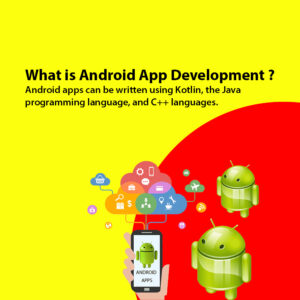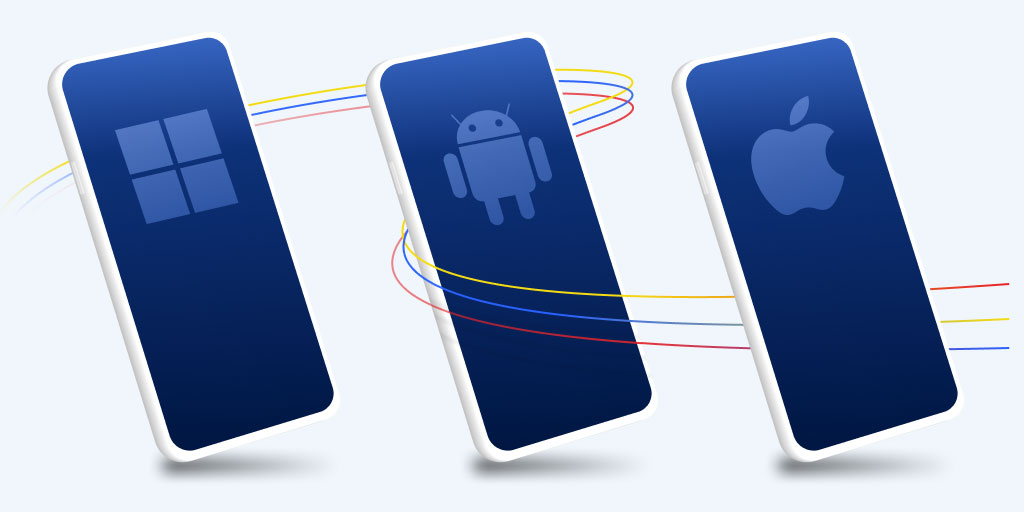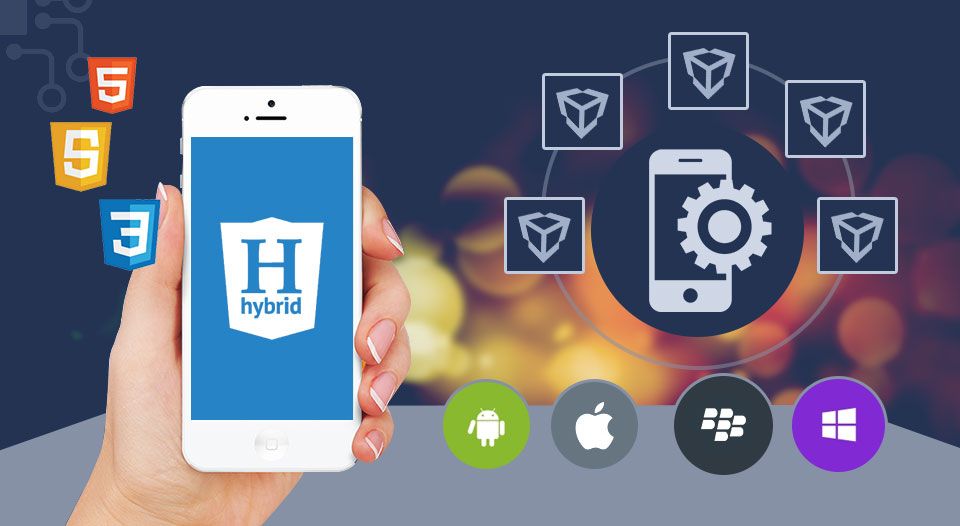Android Development
Android development refers to the process of creating mobile applications for devices that run on the Android operating system. Android is an open-source mobile operating system created by Google, and it is currently the most widely used mobile operating system in the world.
Android developers can create a wide range of applications, including games, social media apps, utility apps, and many others. The Android platform provides a rich set of APIs and libraries that allow developers to create powerful and engaging applications that can run on a wide range of devices.
Mobile application development is the process of making software for smartphones, tablets and digital assistants, most commonly for the Android and iOS operating systems.

5 Advantages of Android App Development
⦁ Low Investment & High ROI- Android comparatively has a low barrier to entry. Android provides freely its Software Development Kit (SDK) to the developer community which minimizes the development and licensing costs. The development costs can be divided into three stages:
Stage#1 — Application development,
Stage#2 –Testing
Stage#3 — Hardware cost for testing and deploying the android mobile application.
⦁ Easy to Integrate- Are you looking for complex technical customization and integration of a web application or just a Smartphone application you already have? Yes. Then an android app can be the right solution for you. The entire platform is ready for customization. You can integrate and tweak the mobile app according to your business need. Android is the best mobile platform between the application and processes architecture. Most of the platforms allow background processes helping you to integrate the apps.
⦁ Easy Adoption- Android applications are scripted in Java language with the help of a rich set of libraries. Anyone can build Android applications with the knowledge of Java. According to a recent survey, a lot of Java programmers find it easy to adopt and script code for mobile applications in the Android OS. It is now very beneficial for Java developers to transition the code script into a mobile application, and can also implement android application development services in the app.
⦁ Open Source- Get the open source advantage from licensing, royalty-free, and the best technology framework offered by the Android community. The architecture of the Android SDK is open-source which means you can actually interact with the community for the upcoming expansions of android mobile application development. This is what makes the Android platform very attractive for handset manufacturers & wireless operators, which results in a faster development of Android based phones, and better opportunities for developers to earn more. That’s the magic of Android.
⦁ Multiple Sales Channel- Unlike other mobile platforms, ⦁ Android app development Services can be deployed in different ways. You do not have to rely on a single market to distribute your applications. You can use third-party application marketplace (especially in Google Android Market), but you can also form your own distribution and sales channel: applications for vertical markets, to develop new application stores, and also place it on your website. You build it, you publish it. With your choice of promotional strategy, you can reach your end users through multiple channels.
If you want to know about Difference between NATIVE & HYBRID in points
There are two type of Android Development
1. Native Android Development: Native Android development involves using the official Android SDK and programming languages such as Java or Kotlin. This approach allows developers to build high-performance, feature-rich, and responsive Android apps that integrate seamlessly with the device’s hardware and software. Native development provides full access to all the features and APIs of the Android platform, allowing developers to create apps with maximum performance and functionality.

Here are the steps involved in native Android development:
1. Install Android Studio: Android Studio is the official integrated development environment (IDE) for Android development. It provides tools for coding, debugging, and testing Android apps, as well as an emulator for testing apps on virtual Android devices.
3. Create a new project: After setting up the development environment, developers can create a new Android project in Android Studio. This involves selecting the project type, choosing a project name and package name, and configuring the project settings.
5. Build and test the app: After writing the code, developers can build and test the app using Android Studio’s build tools and emulator. They can test the app on virtual Android devices with different screen sizes and versions of the Android platform.
2. Set up the development environment: Once Android Studio is installed, developers need to set up the development environment by installing the necessary tools, such as the Android SDK, build tools, and platform tools.
4. Write the code: Once the project is created, developers can start writing the code for their Android app using Java or Kotlin programming languages. They can use Android Studio’s code editor and debugging tools to write and test the code
6. Publish the app: Once the app is tested and ready, developers can publish it to the Google Play Store, where users can download and install it on their Android devices.
2. Hybrid Android Development:Hybrid Android development involves using web technologies such as HTML, CSS, and JavaScript to build cross-platform apps that can run on multiple platforms, including Android. This approach uses frameworks such as Apache Cordova or Ionic, which wrap web technologies into a native container that can interact with the device’s hardware and software. Hybrid development allows developers to write code once and deploy it to multiple platforms, but it may sacrifice performance and some native features.
Hybrid Android development frameworks are tools that enable developers to build cross-platform apps for Android and other platforms using web technologies such as HTML, CSS, and JavaScript.
Here are some of the most popular hybrid Android development frameworks:

1. Apache Cordova: Cordova is an open-source framework that allows developers to build cross-platform mobile apps using HTML, CSS, and JavaScript. It provides a set of plugins that enable access to native device features, such as camera, accelerometer, and file system.
3. React Native: React Native is a hybrid framework that allows developers to build mobile apps for Android and iOS using React, a popular JavaScript library for building user interfaces. It provides access to native device features and allows for high-performance and responsive apps.
2. Ionic: Ionic is a popular hybrid framework that uses AngularJS and Cordova to build mobile apps with HTML, CSS, and JavaScript. It provides a rich set of UI components, themes, and tools that make it easy to build and deploy high-quality mobile apps.
4. Xamarin: Xamarin is a hybrid framework that uses C# and the .NET framework to build cross-platform apps for Android and other platforms. It provides access to native device features and provides a rich set of tools and libraries for building high-quality mobile apps.
Android has many features that make it a popular choice for mobile devices. Here are some of the key features of Android:
1. Open-source: Android is an open-source operating system, which means that the source code is available to anyone who wants to modify or customize it.
3. Multitasking: Android allows users to run multiple apps at the same time, with the ability to switch between them easily.
5. Google Play Store: Android has access to the Google Play Store, which is home to millions of apps, games, and other content.
7. Voice recognition: Android has built-in support for voice recognition, which allows users to control their devices using voice commands
9. Security: Android provides a range of security features such as app permissions, device encryption, and Google Play Protect to keep devices and data safe
2. User interface: Android provides a customizable user interface with widgets, live wallpapers, and support for multiple home screens.
4. Notifications: Android provides a rich notification system that allows users to view and manage notifications from the lock screen and notification shade.
6. Google services: Android devices come with access to Google services such as Google Maps, Google Assistant, and Google Drive.
8. Customization: Android allows users to customize their devices with themes, launchers, and other tools.
10. Compatibility: Android is compatible with a wide range of devices from different manufacturers, making it a versatile platform.

